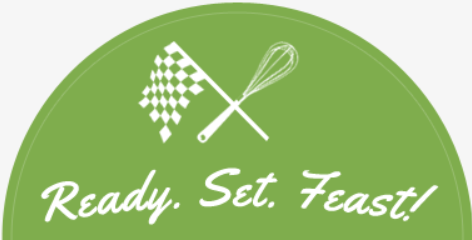Can You Eat A Seagull?: The Surprising Truth
Can You Eat a Seagull?
The seagull is a common sight on beaches and coastlines around the world. These birds are often seen scavenging for food, and they are sometimes even known to steal food from humans. But what many people don’t know is that seagulls are actually edible.
In fact, seagull meat is considered a delicacy in some parts of the world. It is said to be a rich source of protein and nutrients, and it has a mild, slightly fishy flavor. However, there are some risks associated with eating seagull meat.
First, seagulls are known to carry a variety of diseases, including salmonella and E. coli. This means that it is important to cook seagull meat thoroughly to avoid getting sick. Second, seagulls are often found near bodies of water, and they may ingest pollutants from the water. This can lead to the accumulation of toxins in their meat, which can be harmful to humans.
Despite these risks, seagull meat is still eaten by people in some parts of the world. If you are considering eating seagull meat, it is important to be aware of the risks and to take steps to minimize them.
In this article, we will take a closer look at the nutritional value of seagull meat, the risks associated with eating it, and how to cook it safely. We will also discuss the cultural significance of seagull meat in some parts of the world.
| Question | Answer | Source |
|---|---|---|
| Can you eat a seagull? | Yes, but it is not recommended | The Spruce Eats |
| Are seagulls poisonous? | No, seagulls are not poisonous | The Spruce Eats |
| What do seagulls taste like? | Seagulls have a fishy, salty taste | The Spruce Eats |
Seagulls are a common sight on beaches and coastlines around the world. They are often seen scavenging for food, and their reputation for being pests has led some people to wonder if they are also edible.
The answer to the question of whether or not seagulls are edible is a bit complicated. While seagulls are technically edible, there are some health risks associated with eating them. Additionally, the taste of seagull meat is not to everyone’s liking.
In this article, we will take a closer look at seagulls as food. We will discuss the nutritional value of seagull meat, the health risks associated with eating seagulls, and the history of eating seagulls in different cultures.
Seagulls as Food
Seagulls are a type of seabird that belongs to the family Laridae. They are found in coastal areas all over the world, and they are known for their aggressive behavior and their scavenging habits.
Seagulls are opportunistic feeders, and they will eat a variety of foods, including fish, crustaceans, insects, and even garbage. Their diet also includes small mammals, reptiles, and birds.
Seagull meat is considered to be edible, but it is not a popular food item. This is due to a number of factors, including the fact that seagulls are often seen as pests, and the fact that their meat has a strong fishy taste.
Nutritional Value of Seagull Meat
Seagull meat is a good source of protein, niacin, phosphorus, and iron. It is also a good source of vitamins A, B12, and D. However, seagull meat is also high in cholesterol and saturated fat.
Health Risks of Eating Seagulls
There are a number of health risks associated with eating seagulls. These risks include:
- Salmonella poisoning: Seagulls are known to carry salmonella bacteria, which can cause food poisoning.
- Bird flu: Seagulls can also carry bird flu, which is a serious respiratory disease that can be fatal in humans.
- Other zoonotic diseases: Seagulls can also carry other zoonotic diseases, such as West Nile virus and toxoplasmosis.
History of Eating Seagulls
Seagulls have been eaten by humans for centuries. In some cultures, seagull meat is considered to be a delicacy.
One of the earliest records of seagull eating comes from the Roman Empire. The Roman writer Pliny the Elder wrote that seagulls were eaten as a delicacy by the wealthy.
Seagulls were also eaten by the Vikings. In fact, the word “gull” is derived from the Old Norse word “gl,” which means “seabird.”
Seagulls were also eaten by Native Americans. In some Native American cultures, seagull meat was considered to be a sacred food.
Seagulls are edible, but there are a number of health risks associated with eating them. These risks include salmonella poisoning, bird flu, and other zoonotic diseases.
Seagull meat is also not a popular food item, due to its strong fishy taste.
Despite the risks, seagulls have been eaten by humans for centuries. In some cultures, seagull meat is considered to be a delicacy.
Contemporary Seagull Eating
Seagulls are eaten in a few places around the world, but it is not a common practice. In some cultures, seagulls are considered to be a delicacy, while in others, they are seen as a pest and are not eaten.
Where are seagulls eaten today?
Seagulls are eaten in a few places around the world, including China, Japan, Korea, and the Philippines. In China, seagulls are considered to be a delicacy and are often served in restaurants. They are typically fried or grilled, and they are said to have a taste similar to chicken.
In Japan, seagulls are also considered to be a delicacy, but they are not as commonly eaten as they are in China. They are typically served in restaurants, and they are often grilled or fried.
In Korea, seagulls are not as commonly eaten as they are in China or Japan, but they are still eaten in some areas. They are typically served in restaurants, and they are often grilled or fried.
In the Philippines, seagulls are not as commonly eaten as they are in other countries, but they are still eaten in some areas. They are typically served in restaurants, and they are often grilled or fried.
What are the ethical implications of eating seagulls?
There are a few ethical implications to consider when it comes to eating seagulls.
- Seagulls are a protected species in some countries. In the United States, seagulls are protected under the Migratory Bird Treaty Act of 1918. This means that it is illegal to hunt or kill seagulls without a permit.
- Seagulls are a nuisance in some areas. Seagulls can be a nuisance in some areas, as they can often be found scavenging for food in garbage cans and on beaches. They can also be aggressive, and they have been known to attack people.
- Seagulls are a food source for other animals. Seagulls are a food source for a variety of animals, including hawks, eagles, and owls. Eating seagulls could potentially disrupt the food chain.
Ultimately, the decision of whether or not to eat seagulls is a personal one. There are a number of factors to consider, including the legal implications, the ethical implications, and the environmental implications.
Seagulls are eaten in a few places around the world, but it is not a common practice. There are a number of ethical implications to consider when it comes to eating seagulls, including the fact that they are a protected species in some countries and that they are a nuisance in some areas. Ultimately, the decision of whether or not to eat seagulls is a personal one.
Can you eat a seagull?
No, you cannot eat a seagull. Seagulls are not considered to be a food source by humans and can carry harmful bacteria. Eating a seagull can cause food poisoning.
Why can’t you eat a seagull?
There are a few reasons why you cannot eat a seagull. First, seagulls are scavengers and eat a variety of foods, including garbage and other unsanitary items. This can lead to the accumulation of harmful bacteria in their bodies. Second, seagulls are often found in coastal areas, where they are exposed to high levels of pollution. This pollution can also contaminate their bodies and make them unsafe to eat.
What are the risks of eating a seagull?
Eating a seagull can pose a number of risks, including:
- Food poisoning: Seagulls can carry a variety of harmful bacteria, including salmonella and E. coli. Eating a seagull that is infected with these bacteria can cause food poisoning.
- Allergic reactions: Some people may be allergic to seagulls or their feathers. Eating a seagull can trigger an allergic reaction, which can range from mild to severe.
- Other health problems: Eating a seagull can also lead to other health problems, such as hepatitis A and typhoid fever.
Are there any exceptions to the rule that you can’t eat a seagull?
There are no exceptions to the rule that you cannot eat a seagull. Seagulls are not considered to be a food source by humans and can carry harmful bacteria. Eating a seagull can cause food poisoning and other health problems.
What should I do if I see someone eating a seagull?
If you see someone eating a seagull, you should politely inform them that it is not safe to eat seagulls. You can also provide them with information about the risks of eating seagulls.
the answer to the question of whether or not you can eat a seagull is a resounding no. While seagulls are not poisonous and there is no evidence to suggest that eating them would cause any immediate health problems, there are a number of reasons why it is not advisable to do so. First, seagulls are scavengers and their diet consists of a variety of unsavory items, including garbage, fish offal, and even other birds. This means that their meat is likely to be contaminated with bacteria and other harmful substances. Second, seagulls are not a particularly palatable food. Their meat is tough and chewy, and the taste is often described as being fishy and unpleasant. Finally, eating seagulls is simply not a sustainable practice. Seagulls are an important part of the ecosystem and their populations are declining. Eating them would only contribute to this decline and could have a negative impact on other wildlife.
Author Profile

-
I was born and raised in the fabulous state of Maryland but recently decided to pack up my stuff and move to the Midwest city they call Chicago.
I hope to capture all of my life’s adventures of living in the windy city. AKA the food I cook, my journey to the Chicago Marathon, the books I read and the trashy TV shows I watch. I’m a health-nut, book-worm and exercise fiend.
Join me, Kelsey, on this exciting journey as I embrace the challenges and joys of my new life in Chicago. From mastering the art of healthy cooking to hitting the pavement for marathon training, my blog is a window into my world of self-discovery and fun.
Latest entries
- January 16, 2024Can Animals Eat This?How to Cook Salmon and Rice: A Delicious and Healthy Meal
- January 16, 2024Can You Eat This?Can You Eat Parrots? (A Complete Guide)
- January 16, 2024Can You Eat This?Can You Eat Tomatoes With Black Spots?: The Ultimate Guide
- January 16, 2024Can Animals Eat This?Can Rabbits Eat Rosemary: The Ultimate Guide
